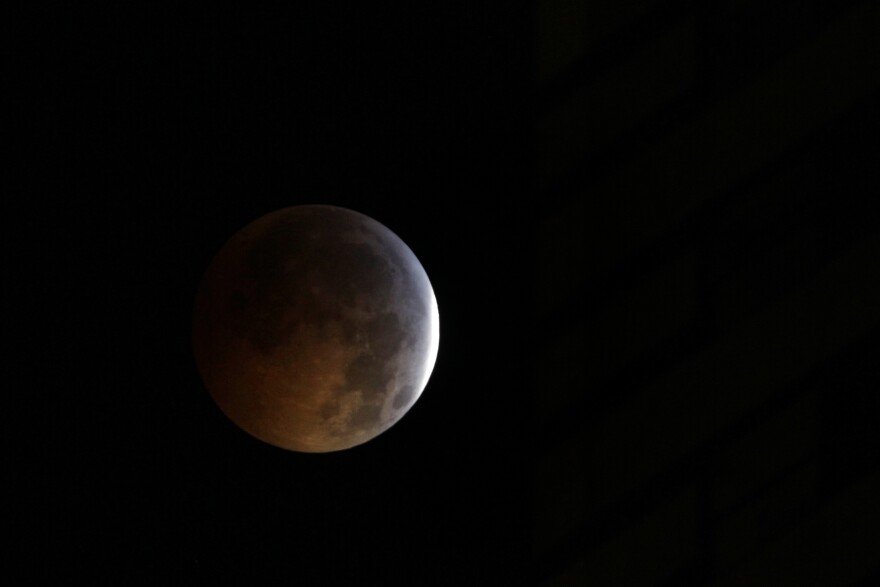If it seems like we just had a lunar eclipse, you're not wrong. The Earth will pass between the moon and the sun again on Sunday, May 15.
One-hundred seventy-seven days ago, the Earth passed between the sun and the moon, creating a lunar eclipse for about three-and-a-half hours. Dean Regas at the Cincinnati Observatory says we're in "eclipse season."
"We're in a little track here where we're having three or four in a row, actually," he says. "We've got the one this Sunday, on the 15th of May, and then 177 days from then, in November, November 9th, we'll have another lunar eclipse. We're awash in eclipses here in the United States. But other parts of the world can't see it as well as we can. At least for this one coming up."
Regas says after the lunar eclipse this November, we'll go through a period with only partial eclipses.
This next eclipse start at 10:27 p.m., Eastern Time, Sunday, he says, and will reach totality about an hour later. It will be visible throughout the Western Hemisphere.
"For us in the Cincinnati area, it's going to be relatively high in the sky, maybe about a third to halfway up the sky, at the beginning, so you won't get quite the deep reds that you normally get with lunar eclipses when they're low on the horizon. The higher they are, the more natural color they're going to be."
Early humans may have been frightened by the disappearing moon, but Regas says they figured it out pretty quick. He says the Babylonians were the first to draw up charts and predict lunar eclipses.
"You look in China, you look in the Mayan Empire, they were able to figure out these things out as well. It's really in ancient Greece where they can say 'When you see that shadow, that is the Earth, that is the rounded Earth,' and so we've known the Earth's been round ever since then."
Regas says no special equipment, like a telescope or binoculars are needed to view the eclipse.



